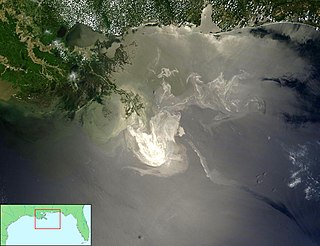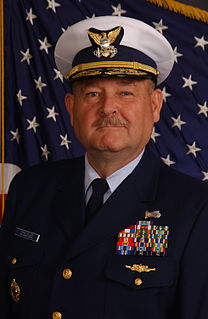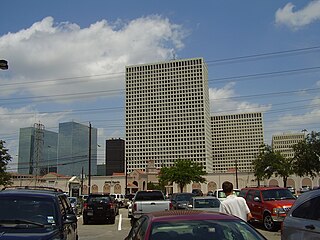
The Unified Command provides Incident Command System/Unified Command (ICS) for coordinating response to the Deepwater Horizon oil spill.

The Incident Command System (ICS) is a standardized approach to the command, control, and coordination of emergency response providing a common hierarchy within which responders from multiple agencies can be effective.
In the Incident Command System, a Unified Command is an authority structure in which the role of incident commander is shared by two or more individuals, each already having authority in a different responding agency. Unified command is one way to carry out command in which responding agencies and/or jurisdictions with responsibility for the incident share incident management.

The Deepwater Horizon oil spill is an industrial disaster that began on April 20, 2010, in the Gulf of Mexico on the BP-operated Macondo Prospect, considered to be the largest marine oil spill in the history of the petroleum industry and estimated to be 8% to 31% larger in volume than the previous largest, the Ixtoc I oil spill, also in the Gulf of Mexico. The U.S. Federal Government estimated the total discharge at 4.9 million barrels. After several failed efforts to contain the flow, the well was declared sealed on September 19, 2010. Reports in early 2012 indicated that the well site was still leaking. The Deepwater Horizon oil spill is regarded as one of the largest environmental disasters in American history.
Contents
The organization was initially headquartered at the Shell Robert Training and Conference Center [1] in Robert, Louisiana. [2] Robert has 20 streets and one stop light. [2] On June 15, 2010, they announced plans to move its 350 staff into 38,224 square feet (3,551.1 m2) of space to downtown New Orleans, Louisiana near the Superdome. [3]

Robert is an unincorporated community in Tangipahoa Parish, Louisiana, United States. It lies east of Hammond, at the intersection of US 190 and LA 445, from which it has a signed exit on Interstate 12. Robert is the largest settlement in Tangipahoa Parish's rural 8th ward.

The Mercedes-Benz Superdome, often referred to simply as the Superdome, is a domed sports and exhibition venue located in the Central Business District of New Orleans, Louisiana, United States. It primarily serves as the home venue for the New Orleans Saints of the National Football League (NFL), the home stadium for the Sugar Bowl, New Orleans Bowl in college football and the longtime rivalry football game of the SWAC Conference’s Southern University and Grambling State University, known as the Bayou Classic. It also houses their schools’ Battle of the Bands between The Southern University "The Human Jukebox" and Grambling State’s Tiger Marching Band.
The group works via consensus on managing the spill and making official statements. Incident commanders from each group report to the National Incident Commander, Admiral Thad Allen, USCG. The Command has Incident Command Centers in Houma, Louisiana; Mobile, Alabama; and Miami, Florida (moving on June 11 from St. Petersburg, Florida). [4] [5]
The incident commander is the person responsible for all aspects of an emergency response; including quickly developing incident objectives, managing all incident operations, application of resources as well as responsibility for all persons involved. The incident commander sets priorities and defines the organization of the incident response teams and the overall incident action plan. The role of incident commander may be assumed by senior or higher qualified officers upon their arrival or as the situation dictates. Even if subordinate positions are not assigned, the incident commander position will always be designated or assumed. The incident commander may, at their own discretion, assign individuals, who may be from the same agency or from assisting agencies, to subordinate or specific positions for the duration of the emergency.

Thad William Allen is a former United States Coast Guard admiral who served as the 23rd Commandant of the Coast Guard. Allen is best known for his widely praised performance directing the federal response to Hurricanes Katrina and Rita in the Gulf Coast region from September 2005 to January 2006, and for his role as National Incident Commander of the Unified Command for the Deepwater Horizon oil spill in the Gulf of Mexico in 2010. Robert J. Papp, Jr. succeeded him as Commandant on May 25, 2010, in a change of command ceremony.
According to the National Incident Management System (NIMS), and the Incident Command System (ICS), the Incident Command Post (ICP) is one of five predesignated temporary facilities and signifies the physical location of the tactical-level, on-scene incident command and management organization. It typically comprises the Incident Commander and immediate staff and may include other designated incident management officials and responders from Federal, State, local, and tribal agencies, as well as private-sector, nongovernmental, and volunteer organizations.
Among the functions is the Joint Information Center, consisting of Public information officers from the various components which coordinates the daily news. [6]
Public information officers (PIOs) are the communications coordinators or spokespersons of certain governmental organizations. The primary responsibility of a PIOs is to provide information to the public and media as necessary and to meet the legal requirements. PIOs are often identified by the initials "PIO" emblazoned on helmets or vests.








